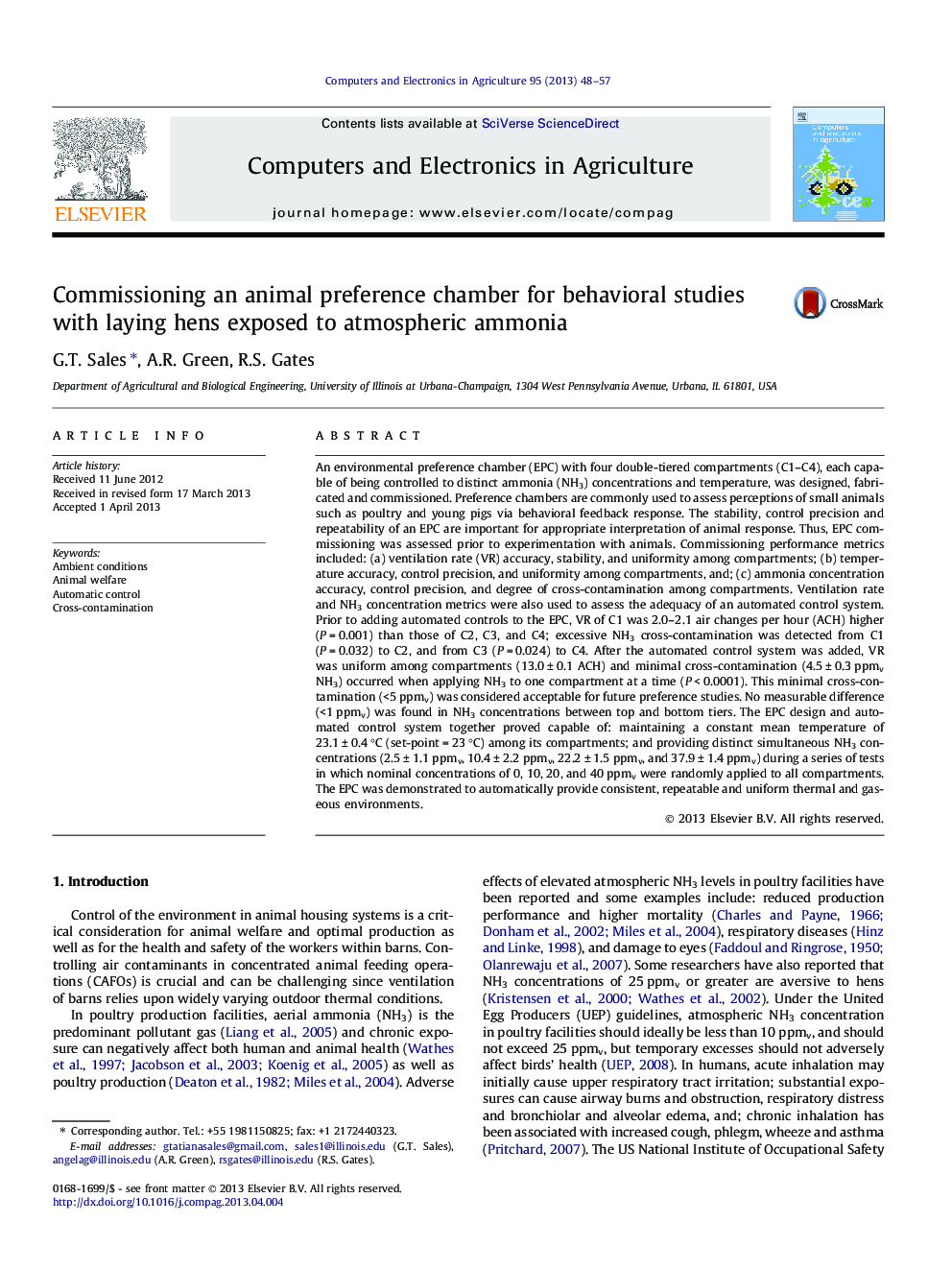| Article ID | Journal | Published Year | Pages | File Type |
|---|---|---|---|---|
| 84788 | Computers and Electronics in Agriculture | 2013 | 10 Pages |
•An automated environmental preference chamber (EPC) was built and commissioned.•The EPC design helped attenuate infiltration between interconnected compartments.•The EPC automation system was capable of controlling its environmental processes.•Temperature and NH3 concentrations were maintained at preset values by algorithm.•Commissioning showed indispensable prior to using a system for studies with animals.
An environmental preference chamber (EPC) with four double-tiered compartments (C1–C4), each capable of being controlled to distinct ammonia (NH3) concentrations and temperature, was designed, fabricated and commissioned. Preference chambers are commonly used to assess perceptions of small animals such as poultry and young pigs via behavioral feedback response. The stability, control precision and repeatability of an EPC are important for appropriate interpretation of animal response. Thus, EPC commissioning was assessed prior to experimentation with animals. Commissioning performance metrics included: (a) ventilation rate (VR) accuracy, stability, and uniformity among compartments; (b) temperature accuracy, control precision, and uniformity among compartments, and; (c) ammonia concentration accuracy, control precision, and degree of cross-contamination among compartments. Ventilation rate and NH3 concentration metrics were also used to assess the adequacy of an automated control system. Prior to adding automated controls to the EPC, VR of C1 was 2.0–2.1 air changes per hour (ACH) higher (P = 0.001) than those of C2, C3, and C4; excessive NH3 cross-contamination was detected from C1 (P = 0.032) to C2, and from C3 (P = 0.024) to C4. After the automated control system was added, VR was uniform among compartments (13.0 ± 0.1 ACH) and minimal cross-contamination (4.5 ± 0.3 ppmv NH3) occurred when applying NH3 to one compartment at a time (P < 0.0001). This minimal cross-contamination (<5 ppmv) was considered acceptable for future preference studies. No measurable difference (<1 ppmv) was found in NH3 concentrations between top and bottom tiers. The EPC design and automated control system together proved capable of: maintaining a constant mean temperature of 23.1 ± 0.4 °C (set-point = 23 °C) among its compartments; and providing distinct simultaneous NH3 concentrations (2.5 ± 1.1 ppmv, 10.4 ± 2.2 ppmv, 22.2 ± 1.5 ppmv, and 37.9 ± 1.4 ppmv) during a series of tests in which nominal concentrations of 0, 10, 20, and 40 ppmv were randomly applied to all compartments. The EPC was demonstrated to automatically provide consistent, repeatable and uniform thermal and gaseous environments.
